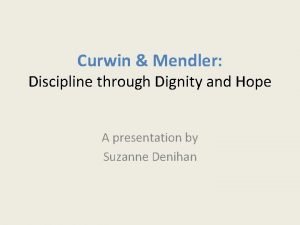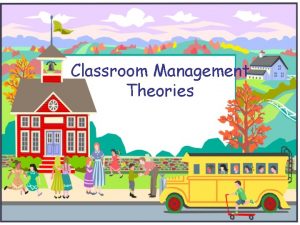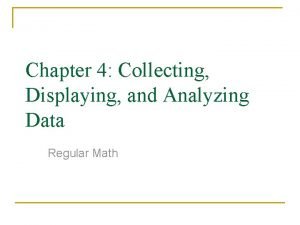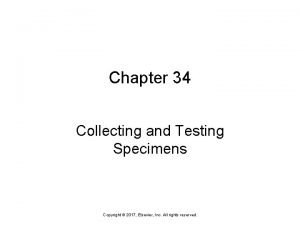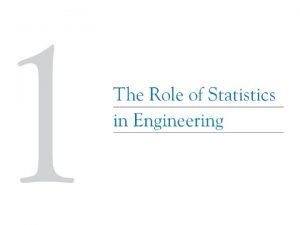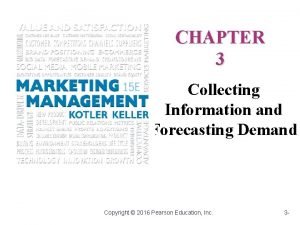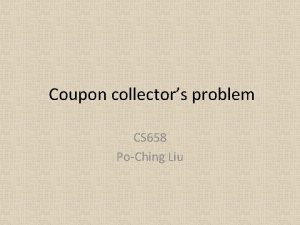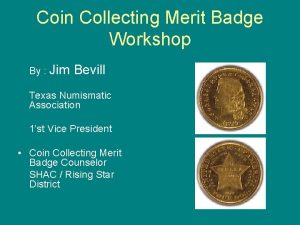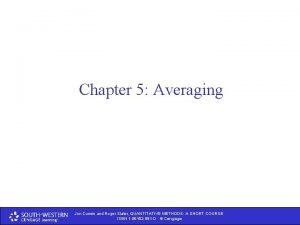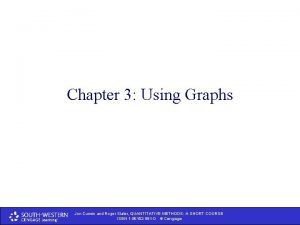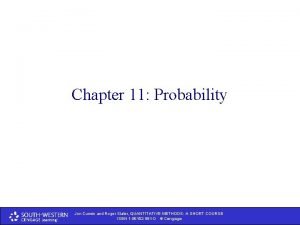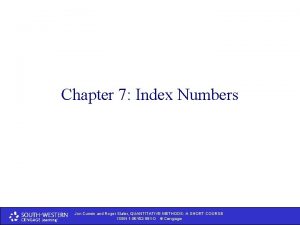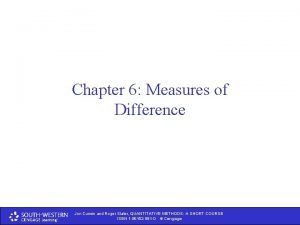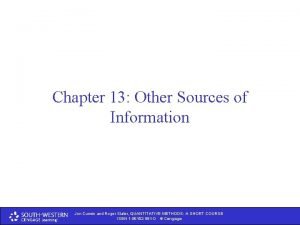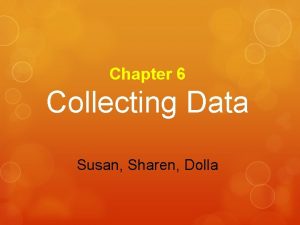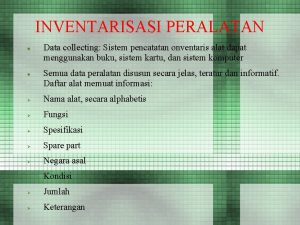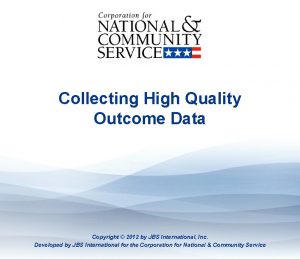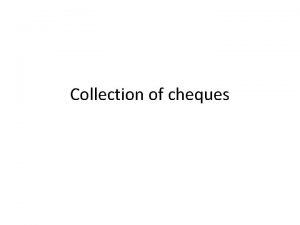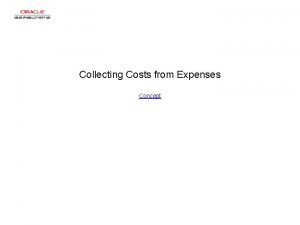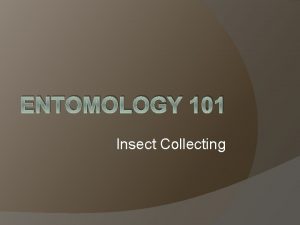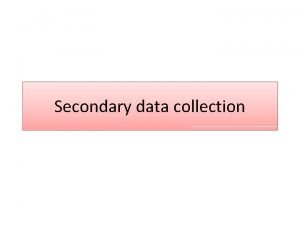Chapter 12 Collecting Data Jon Curwin and Roger

















- Slides: 17

Chapter 12: Collecting Data Jon Curwin and Roger Slater, QUANTITATIVE METHODS: A A SHORT COURSE ISBN 1 -86152 -991 -0 © Thomson © Cengage Learning 2004

Objectives • Identify the important issues of data collection • Clarify the purpose of primary data • Describe various techniques of data collection • Critically consider questionnaire design Jon Curwin and Roger Slater, QUANTITATIVE METHODS: A A SHORT COURSE ISBN 1 -86152 -991 -0 © Thomson © Cengage Learning 2004

The need for data • Data is collected in a variety of ways to inform decision making • Data we collect is referred to as primary data • Data others have collected is referred to as secondary data Jon Curwin and Roger Slater, QUANTITATIVE METHODS: A A SHORT COURSE ISBN 1 -86152 -991 -0 © Thomson © Cengage Learning 2004

All those collected facts and figures are referred to as data. When data can inform the user it is called information. Jon Curwin and Roger Slater, QUANTITATIVE METHODS: A A SHORT COURSE ISBN 1 -86152 -991 -0 © Thomson © Cengage Learning 2004

Important terms Population – all those people or items of interest to us Sample – a selection from the population Sampling frame – a listing of all those in the population Random – gives each individual a calculable chance (typically equal chance) of selection Jon Curwin and Roger Slater, QUANTITATIVE METHODS: A A SHORT COURSE ISBN 1 -86152 -991 -0 © Thomson © Cengage Learning 2004

Sample Design The design should allow the efficient and effective collection of data from the chosen respondents Most sample designs will retain some element of randomness to ensure fair representation An exception is a purposeful sample selected on the basis of our knowledge to serve a clear purpose Jon Curwin and Roger Slater, QUANTITATIVE METHODS: A A SHORT COURSE ISBN 1 -86152 -991 -0 © Thomson © Cengage Learning 2004

Simple random sampling (SRS) • All possible respondents given an equal chance of selection • Some form of lottery method used e. g. computer generated random numbers (look at Excel), random number tables or try your calculator Jon Curwin and Roger Slater, QUANTITATIVE METHODS: A A SHORT COURSE ISBN 1 -86152 -991 -0 © Thomson © Cengage Learning 2004

Stratified sampling • Attempts to use our knowledge of the population to improve the representation of the sample • Relevant groups or strata are identified and a fair selection made from each i. e. if 60% of your population own a car and this is a relevant factor then 60% of your sample should own a car Jon Curwin and Roger Slater, QUANTITATIVE METHODS: A A SHORT COURSE ISBN 1 -86152 -991 -0 © Thomson © Cengage Learning 2004

Systematic sampling • If the sampling frame provides a convenient numbering, respondents can be selected at intervals – systematically • Suppose we wanted to select 6 from a numbered list 00 to 59. We need every 10 th person. Taking a random number to start, say 7, we would select the 7 th , 17 th and so on Jon Curwin and Roger Slater, QUANTITATIVE METHODS: A A SHORT COURSE ISBN 1 -86152 -991 -0 © Thomson © Cengage Learning 2004

Some other sampling methods • Cluster sampling – distinct groups are selected • Multi-stage –we work through various levels i. e select constituencies, select wards with constituencies, select people within wards • Quota sampling – interviewer selects (non-random) respondents from given quota Jon Curwin and Roger Slater, QUANTITATIVE METHODS: A A SHORT COURSE ISBN 1 -86152 -991 -0 © Thomson © Cengage Learning 2004

Sample size The determination of sample size can become a very technical exercise. Factors to consider: • Accuracy required • Variability within the population • The information required i. e. by subgroup Jon Curwin and Roger Slater, QUANTITATIVE METHODS: A A SHORT COURSE ISBN 1 -86152 -991 -0 © Thomson © Cengage Learning 2004

The questionnaire The design and structure of the questionnaire will depend on: • The purpose of the survey (objectives) • Availability of respondents • Likely response to questions • Information required Jon Curwin and Roger Slater, QUANTITATIVE METHODS: A A SHORT COURSE ISBN 1 -86152 -991 -0 © Thomson © Cengage Learning 2004

Questionnaires are used for: • Structured interviews • Telephone surveys • Postal surveys • Adapted for the internet (email proforma) • Used as checklists Jon Curwin and Roger Slater, QUANTITATIVE METHODS: A A SHORT COURSE ISBN 1 -86152 -991 -0 © Thomson © Cengage Learning 2004

Types of question: • Open-ended i. e. ‘What would you say …’ • Closed i. e. ‘Which of the following …’ • Ranking i. e. ‘Rank the following in order of importance …’ • Scale i. e. ‘On a scale of 1 to 5 …’ Jon Curwin and Roger Slater, QUANTITATIVE METHODS: A A SHORT COURSE ISBN 1 -86152 -991 -0 © Thomson © Cengage Learning 2004

Framing the questions • Avoid bias • Avoid jargon • Avoid ambiguous words • Keep questions short and simple • Avoid questions with negatives Jon Curwin and Roger Slater, QUANTITATIVE METHODS: A A SHORT COURSE ISBN 1 -86152 -991 -0 © Thomson © Cengage Learning 2004

Framing the questions • Avoid hypothetical questions • Use filters to avoid irrelevant questions • Make it easy for respondent to give answer Jon Curwin and Roger Slater, QUANTITATIVE METHODS: A A SHORT COURSE ISBN 1 -86152 -991 -0 © Thomson © Cengage Learning 2004

Conclusions • Any research is likely to use both secondary and primary data • It is important to clarify research objectives • It is important to carefully define the population and sample selection method • The quality of the data will depend on the quality of the sample design and questionnaire design Jon Curwin and Roger Slater, QUANTITATIVE METHODS: A A SHORT COURSE ISBN 1 -86152 -991 -0 © Thomson © Cengage Learning 2004
 Curwin and mendler
Curwin and mendler Ginott model classroom management
Ginott model classroom management Collecting and displaying data
Collecting and displaying data Chapter 34 collecting and testing specimens
Chapter 34 collecting and testing specimens Collecting highly parallel data for paraphrase evaluation
Collecting highly parallel data for paraphrase evaluation Samples of collecting engineering data
Samples of collecting engineering data Collecting information and forecasting demand
Collecting information and forecasting demand Marketing research and forecasting demand
Marketing research and forecasting demand Reabsorption
Reabsorption Cortical portion of the collecting duct
Cortical portion of the collecting duct Transversus abdominis
Transversus abdominis Maths bot.com
Maths bot.com Coupon collecting problem
Coupon collecting problem Collecting gas over water
Collecting gas over water Lymphatic collecting vessels
Lymphatic collecting vessels Collecting gas over water
Collecting gas over water Rutherford stamp collecting
Rutherford stamp collecting Boy scout coin collecting merit badge
Boy scout coin collecting merit badge
